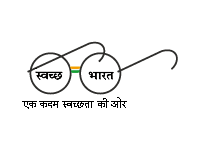The Rail Coordination Directorate of the State Government has been coordinating between the State Government and the Ministry of Railways, Govt. of India. It has been instrumental in development of Rail infrastructure as well as passenger amenities in the State of Odisha. Rail Coordination Directorate functions independently under the umbrella of Commerce & Transport Department of Government of Odisha. This is headed by Commissioner Rail Coordination (CRC) & Special Secretary to Government.
Odisha is served by three Zonal Railways of Indian Railways, namely East Coast Railway (ECoR)/Bhubaneswar, South Eastern Railway (SER)/Garden Reach Kolkata and South East Central Railway (SECR)/Bilaspur. These Railways are headed by General Managers (GMs) and under them Railways are organised as Divisional units headed by Divisional Railway Managers (DRMs).
Rail Coordination department used to act as a bridge between the needs and requirements of Odisha with that of the far placed Railway Head Quarters of undivided SER at Kolkata. Over the years the role of this directorate has transformed from mere coordination to leading policy shifts for the economic and developmental needs of the State. Even though Railways is a central subject, Government of Odisha has adopted a very unique and forward looking strategy to help increasing the Rail density of the State, which has historically been lesser than the national average. The Rail Coordination directorate has played a significant role in shaping this policy of State coming forward to financially participate in Railway Projects and partner Indian Railways for the greater benefit of the State and its citizens. Post trifurcation of SER, the role of Rail Coordination directorate has attained even more significance.
Today, this directorate plays a leading role in aggregating the requirements and demands of Odisha on the Railway Budget and puts them for consideration at the level of Railway Board. This directorate also lends assistance to the House Committee of the State Legislature and helps issues to be addressed by Ministry of Railways.















